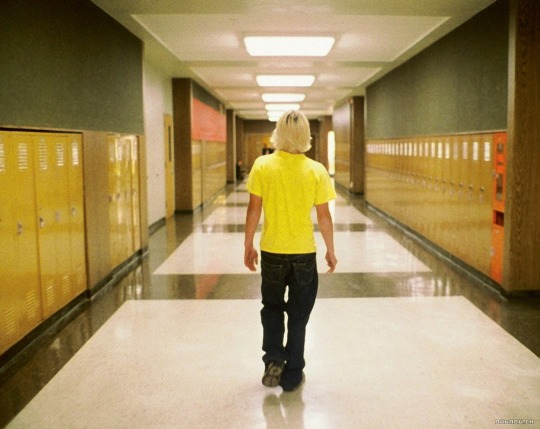The Columbine Movie in the Age of Mass Shootingsby Scott Tobias
By Yasmina Tawil

You know theres others like us out there. Eric, Elephant
On April 20th, 1999, Eric Harris and Dylan Klebold executed a massacre at Columbine High School in Colorado, killing 12 of their fellow students, a teacher, and finally themselves, while wounding about two dozen more. Much would be reported in the aftermath about their motives and other particularsprecious little of it true, according to Dave Cullens definitive accounting, Columbine, published a decade later. But the incident was one of those where-were-you-then moments, a horror that unfolded on television and forever colored our thinking on school safety, gun violence, bullying, and a catch-all of possible toxins within the culture, from first-person shooting games to Marilyn Manson records. According to their journals, Harris and Klebold intended mass murder on the scale of the Oklahoma City bombing, and while they failed in that respect, the event nonetheless put an exclamation mark on a decadeand a century, and a millenniaof violence.
Four years later, when Gus Van Sants Elephant, a thinly disguised meditation on Columbine, picked up the Palme DOr and Best Director at Cannes, critics were fiercely divided over the question of representation. Was it even appropriate to make a Columbine movie at all? And was Van Sant successful in adding some perspective to the incident without succumbing to artsploitation or immortalizing the falsehoods that flourished in the aftermath? Writing for the Boston Globe at the time, Wesley Morris, one of the films most fervent champions, summed up the controversy thusly:
The film is either a tightlipped essay on the Columbine massacre or a sub-pornographic piece of exploitationist hooey. Its either a pretentious art director showing off what he can do or the grisliest John Hughes movie ever. The brilliance of Van Sants movie is that it’s all of those things.

At the time, there was a too-soon-ness to Elephant that seemed to fuel the criticism against it, like Van Sant had answered one obscenity with an obscenity of another kind. But what does it look like in 2016, when school shootings have become so commonplace that only a handful of the worst ones make the news cycle? Everyone remembers Virginia Tech in 2007 (32 killed), Sandy Hook Elementary School in 2012 (28 killed, 20 aged six or seven), and Umpqua Community College in 2015 (10 killed), not to mention the recent horrors at a movie theater in Aurora, Colorado, a black church in Charleston, and regional center in San Bernadino, California. And yet, can we even remember the names of the perpetrators? Its like a cancer thats metastasized across the entire country: The sickness is so widespread now that any one case cannot be examined in isolation for too long. The days when pundits could safely bloviate about violent video games on cable TV now seem positively quaint.



